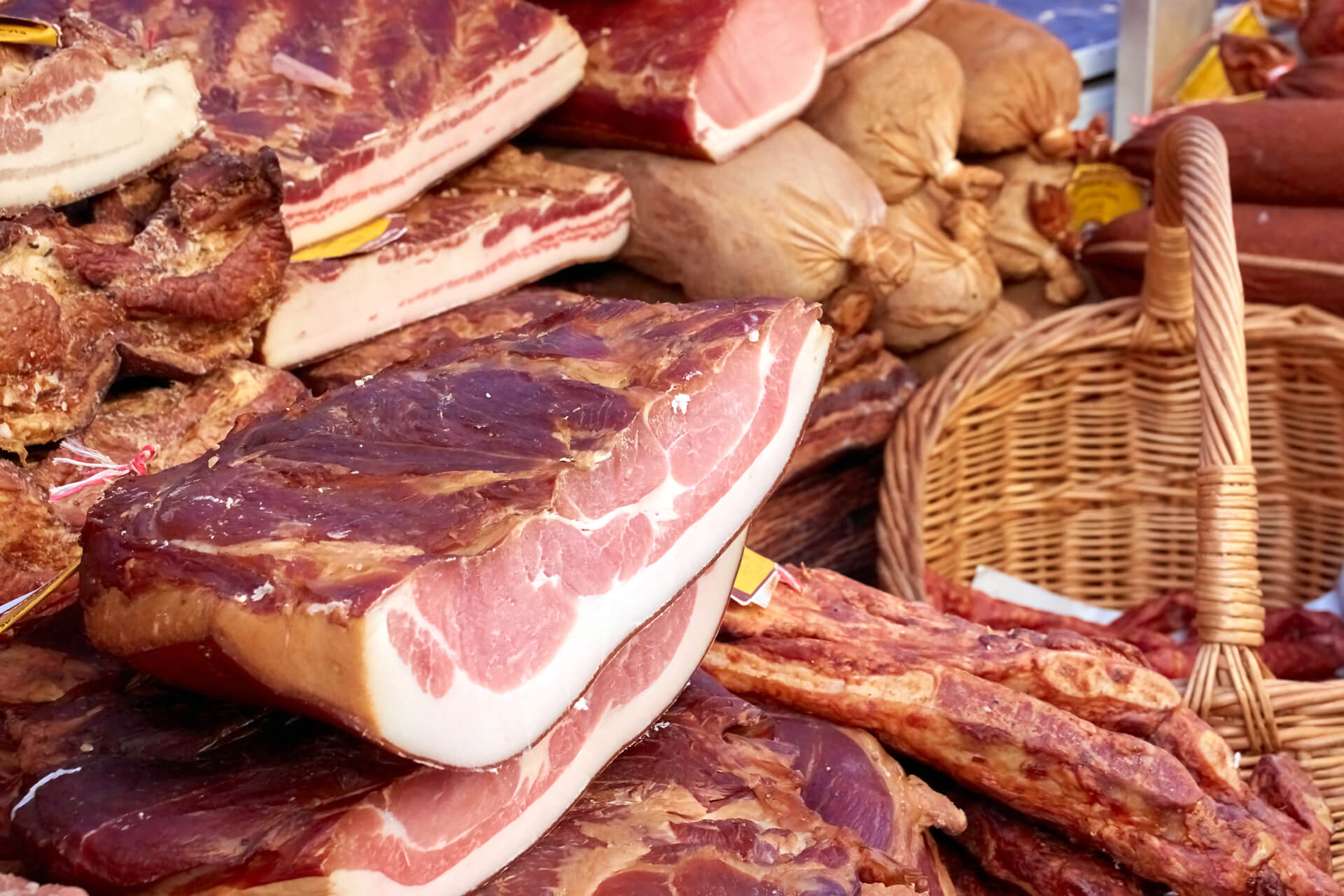Why Citizens Love Bagley Farms Meat Market Edwardsville IL for Their Meat Purchasing
Why Citizens Love Bagley Farms Meat Market Edwardsville IL for Their Meat Purchasing
Blog Article
Discover the Art of the Butcher's Cut in a Modern Meat Market
In the ever-evolving landscape of contemporary meat markets, the butcher's cut has actually transcended its typical origins, combining olden craftsmanship with contemporary techniques. Today's butchers are not just cpus of meat; they are educated craftsmens that highlight sustainability and ethical sourcing. Their know-how in picking and preparing cuts tailored to certain cooking demands provides an unequaled dining experience. Yet, what absolutely establishes the contemporary butcher apart is their ability to build a deeper connection in between consumers and the origins of their meat. How do these masters equilibrium custom with advancement, and what ramifications does this have for the future of meat consumption?
Advancement of Butchery Methods
The advancement of butchery methods shows a rich tapestry of advancement and adaptation driven by innovations in modern technology, modifications in consumer demand, and a much deeper understanding of meat science. Historically, butchery was a craft gave through generations, with approaches developed over centuries to maximize return and taste. The industrial change ushered in mechanization, transforming standard techniques and enabling large processing.
The mid-20th century saw butchery methods better refined by scientific insights into muscle mass biology and meat aging, boosting both tenderness and taste. Advancements like vacuum cleaner product packaging and refrigeration extended product shelf-life, allowing butchers to branch out offerings and improve quality assurance. This period additionally noted the increase of specific devices, such as band saws and meat slicers, which boosted accuracy and performance in meat handling.

Computerized systems currently assist in monitoring animal provenance and maximizing cuts to satisfy particular customer choices. Furthermore, a revival in artisanal butchery has arised, mixing standard skills with modern-day understanding to cater to customers seeking honest and lasting meat alternatives.
Recognizing Meat Cuts
Understanding the ins and outs of meat cuts is necessary for both butchers and customers looking for high quality and worth. For butchers, precise cuts show ability and regard for the craft, making certain very little waste and optimum return.

Recognizing muscular tissue structure is important; muscles used extra often by the animal often tend to be harder and are best suited for slow-moving food preparation methods, while less-used muscular tissues, like those discovered in the loin, are much more tender and ideal for barbecuing or roasting. Familiarity with these differences equips consumers to make click to read educated choices, boosting their cooking undertakings.
Picking Quality Meat
Choosing the best meat includes greater than just choosing an aesthetically attractive item from the screen. bagley farms meat market edwardsville il. The art of picking quality meat needs a critical eye and understanding of details qualities that signify freshness and quality. Pay attention to the shade; beef needs to have a bright, cherry-red hue, while lamb ought to display a soft pink tone, and pork a light pink. This indicates the meat is fresh and hasn't been subjected to oxygen for also lengthy.
Second of all, think about the marbling, which refers to the white flecks of fat within the muscular tissue. Proper marbling is an essential indication of inflammation and flavor, as it thaws throughout cooking, improving the meat's juiciness. Bear in mind, greater marbling usually correlates with premium quality cuts, such as USDA Prime.
Structure is another important variable; meat needs to really feel strong to the touch, not slimed or extremely soft. In addition, bear in mind the scent. Fresh meat should have a clean, neutral smell, without any type of sour or off-putting smells.
Pairing Cuts With Cooking Methods

Conversely, harder cuts like brisket and chuck you can look here roast are abundant in collagen, which breaks down into gelatin when prepared gradually. These cuts are perfect for braising or sluggish roasting, allowing the meat to soften with time and develop deep, complex flavors. Likewise, cuts such as brief ribs and pork shoulder prosper with slow-cooking approaches, where expanded cooking times transform their robust textures into succulent meals.
Lamb shanks and oxtail, which require prolonged cooking to tenderize, are ideal candidates for stewing or slow simmering. These methods coax out rich, hearty flavors while maintaining wetness. By recognizing the one-of-a-kind qualities of each cut, chefs and home chefs alike can boost their cooking productions, ensuring each dish is both pleasing and remarkable.
The Butcher's Duty Today
Browsing the developing landscape of see here the modern meat market, the butcher's duty today expands beyond mere prep work of cuts. Contemporary butchers are culinary artisans, instructors, and advocates for lasting practices. They connect the gap in between the farm and the fork by making certain honest sourcing, understanding pet husbandry, and prioritizing transparency in the supply chain. This change shows the expanding consumer need for quality over amount, where provenance and animal well-being are paramount.
In addition to crafting specific cuts, butchers currently engage directly with consumers, providing cooking suggestions and tailoring options to fit specific needs and preferences. Their competence in meat aging, marbling, and taste profiles equips customers to make enlightened decisions, enhancing their cooking experiences. This customized solution exhibits the butcher's evolving function as a relied on expert in the kitchen.
Additionally, butchers are pivotal in minimizing waste, using entire pets to create diverse products such as sausages and supplies. This thorough approach not only appreciates the animal however additionally aligns with contemporary sustainability goals. In this method, the modern-day butcher personifies both tradition and development, adjusting to an ever-changing market while maintaining the artistry and integrity of their craft.
Final Thought
Mastery in understanding varied meat cuts and top quality indications equips butchers to offer informed referrals, lining up particular cuts with optimal food preparation approaches. By honoring historical techniques while accepting contemporary needs, the butcher's duty stays vital in today's innovative meat market.
Report this page